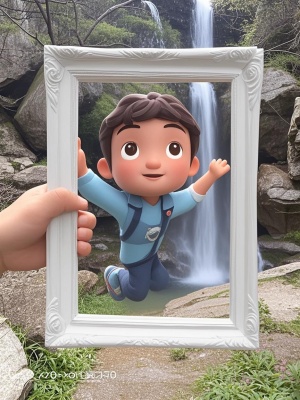The Art and Technology of 3D Self Portraits
Introduction: The Rise of 3D Self Portraits
3D self portraits represent an exciting fusion of art and technology, allowing individuals to create lifelike digital representations of themselves. Unlike traditional 2D portraits, these three-dimensional creations offer unprecedented realism and interactivity. From social media avatars to professional applications in gaming and virtual reality, 3D self portraits are revolutionizing how we represent ourselves digitally.
At MediaAI, we've seen growing interest in this technology, particularly among users exploring our gallery of digital creations. The ability to capture not just appearance but personality and expression in three dimensions opens up new creative possibilities.
The Technology Behind 3D Self Portraits
Photogrammetry vs. AI Generation
There are two primary methods for creating 3D self portraits: photogrammetry and AI generation. Photogrammetry involves capturing multiple photographs from different angles and using software to reconstruct a 3D model. AI generation, like the techniques we use at AI Image to Image, can create 3D models from a single photo using neural networks.
- Photogrammetry requires specialized equipment but offers high precision
- AI generation is more accessible but may lack some detail
- Hybrid approaches combine the best of both technologies
Texturing and Lighting
Creating realistic textures and proper lighting is crucial for believable 3D self portraits. Advanced software can capture skin texture details, including pores and subtle color variations. Proper lighting setup ensures the portrait looks natural in different virtual environments.
Applications of 3D Self Portraits
Personal Use Cases
3D self portraits have numerous personal applications, from social media profiles to digital memorials. Many users create them for special occasions documented in our wedding scenes or graduation scenes sections.
- Virtual reality avatars
- Personalized gaming characters
- Digital art collections
- Online meeting representations
Professional Applications
In professional contexts, 3D self portraits are used in film production, architectural visualization, and medical applications. The entertainment industry particularly values the ability to create digital doubles of actors.
Creating Your Own 3D Self Portrait
Equipment and Software Options
While professional studios offer the highest quality results, consumer-grade options have become increasingly accessible. Many smartphones now have depth-sensing cameras that can capture basic 3D data. For those interested in DIY approaches, our AI Art Guide provides helpful starting points.
Step-by-Step Process
The typical workflow for creating a 3D self portrait involves:

- Capturing source images or video from multiple angles
- Processing the data through reconstruction software
- Cleaning up and refining the 3D mesh
- Adding textures and materials
- Rendering the final portrait
Challenges and Solutions in 3D Self Portraiture
| Challenge | Solution |
|---|---|
| Capturing fine details like hair | Use specialized hair cards or post-processing techniques |
| Maintaining likeness in stylized portraits | Combine AI generation with manual refinement |
| File size and compatibility issues | Optimize models and use standard formats like OBJ or FBX |

The Future of 3D Self Portraits
As technology advances, we can expect 3D self portraits to become more realistic and easier to create. Emerging technologies like neural radiance fields (NeRF) promise photorealistic results from simple video inputs. The integration with augmented reality will likely make 3D portraits part of our daily digital interactions.

For those interested in exploring this technology further, our AI Painting Guide offers additional insights into digital art creation techniques.
Conclusion: A New Era of Self-Representation
3D self portraits represent more than just technological novelty - they offer a new medium for self-expression and identity exploration in digital spaces. As the tools become more accessible and the results more impressive, we can expect these digital likenesses to play an increasingly important role in both personal and professional contexts.
Whether you're an artist exploring new mediums or simply curious about digital identity, creating a 3D self portrait can be a rewarding creative journey. The technology continues to evolve rapidly, making this an exciting time to experiment with three-dimensional self-representation.